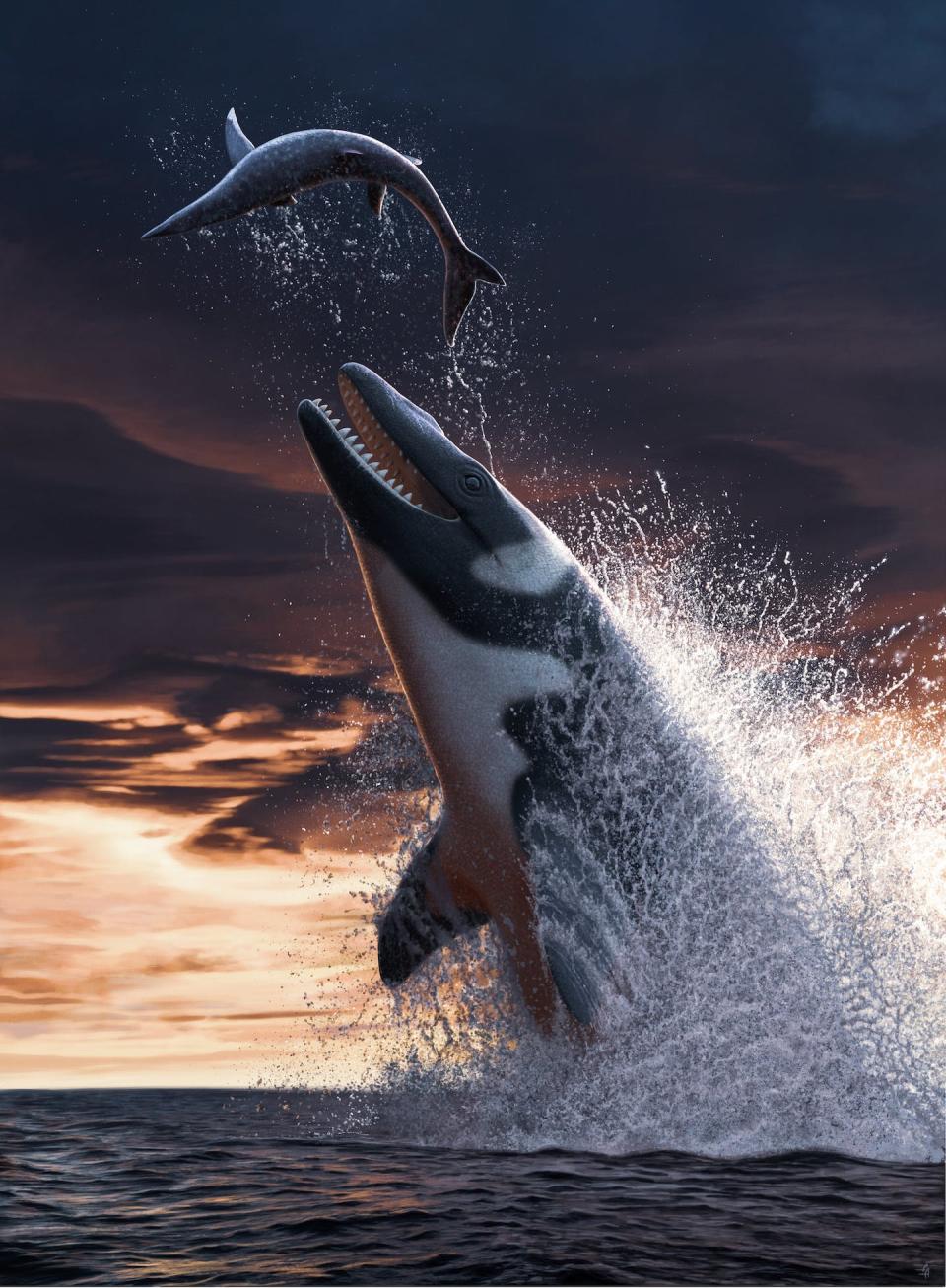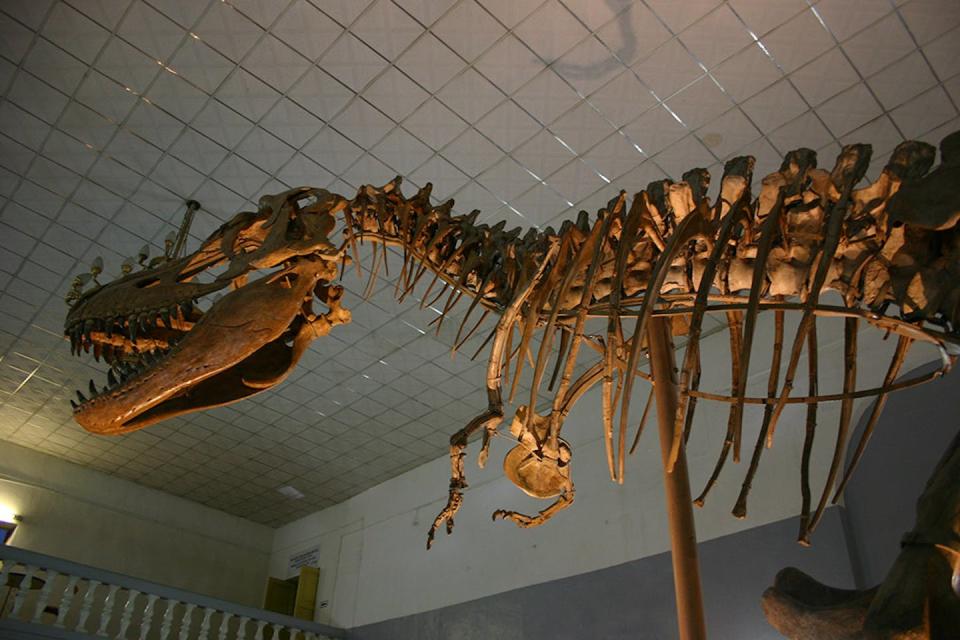The reality of Black men's love lives and marriages is very different than what's usually shown on TV – I spent years actually talking to them

- Oops!Something went wrong.Please try again later.
Finding and keeping a good Black man in a relationship has become a cottage industry. From celebrities and reality TV stars to social media influencers, for better or worse, there is no shortage of relationship advice to people seeking to figure out Black men.
And while much of this content is understood to be for entertainment purposes only, some of it is presented and received as legitimate and data-driven.
This is a problem because too many people cannot distinguish what they see onscreen from reality. Media portrayals are often hyperbolic and sensationalized to attract public attention. Equally troubling is that the majority of academic research in this area also perpetuates many of the same, negative patterns that are common in popular culture.
As a graduate student and university professor, I have spent nearly two decades reviewing these studies on Black men and families. The general consensus from them falls into one of two categories: first, that many Black men are not viable marriage mates because their financial struggles will not allow them to provide for a wife and children.
Other studies conclude that many poor Black men reject monogamous romantic relationships in favor of a hypersexual masculinity to overcompensate for their inability to fulfill the traditional breadwinner role. These men, the studies conclude, treat women as conquests rather than partners.
In both historical and more recent research, studies on Black men have disproportionately examined the lives of low-income men and the struggles they faced in maintaining stable relationships in the face of economic disadvantage.
I have found that the near-exclusive focus on low-income Black men in research related to the family skews perceptions of these men. It also limits the public’s knowledge of them and the meanings they attach to their romantic relationships. And this perception can be used to perpetuate negative stereotypes that frame them as dangerous and predatory.

Resetting the image
In response to that limited view, I spent the last four years conducting a study on a more diverse group of Black men to learn more about their perspectives on marriage.
The men’s stories reveal important findings that are typically not explored in research on Black men. They opened up about their desire for intimacy and companionship in their relationships.
My findings, many of which are counter to the popular image that our society holds of Black men, have just been published in a book, “Black Love Matters: Authentic Men’s Voices on Marriage and Romantic Relationships.”
My study followed 33 Black men from Louisville, Kentucky, chronicling their personal circumstances, as well as their attitudes, experiences and behaviors within their marriages and romantic relationships. The data for the study were collected from over 150 hours of interviews with the men.
The men I interviewed ranged in age from 18 to 72. They represented a variety of relationship statuses, with men reporting being single, romantically involved, married, divorced and remarried. The men were also diverse in their educational attainment. Some had graduate and professional degrees, while others had high school diplomas and GEDs. The men also varied in their economic situations, with annual incomes ranging from

Sixty six million years ago, sea monsters really existed. They were mosasaurs, huge marine lizards that lived at the same time as the last dinosaurs. Growing up to 12 metres long, mosasaurs looked like a Komodo dragon with flippers and a shark-like tail. They were also wildly diverse, evolving dozens of species that filled different niches. Some ate fish and squid, some ate shellfish or ammonites.
Now we’ve found a new mosasaur preying on large marine animals, including other mosasaurs.

The new species, Thalassotitan atrox, was dug up in the Oulad Abdoun Basin of Khouribga Province, an hour outside Casablanca in Morocco.
At the end of the Cretaceous period, sea levels were high, flooding much of Africa. Ocean currents, driven by the trade winds, pulled nutrient-rich bottom waters to the surface, creating a thriving marine ecosystem. The seas were full of fish, attracting predators – the mosasaurs. They brought their own predators, the giant Thalassotitan. Nine metres long and with a massive, 1.3 metre-long head, it was the deadliest animal in the sea.

Most mosasaurs had long jaws and small teeth to catch fish. But Thalassotitan was built very differently. It had a short, wide snout and strong jaws, shaped like those of a killer whale. The back of the skull was wide to attach large jaw muscles, giving it a powerful bite. The anatomy tells us this mosasaur was adapted to attack and tear apart large animals.
The massive, conical teeth resemble the teeth of orcas. And the tips of those teeth are chipped, broken and ground down. This heavy wear – not found in fish-eating mosasaurs – suggests Thalassotitan damaged its teeth biting into the bones of marine reptiles like plesiosaurs, sea turtles and other mosasaurs.

At the same site we’ve found what look like the fossilised remains of its victims. The rocks producing Thalassotitan skulls and skeletons are full of partially digested bones from mosasaurs and plesiosaurs. The teeth of these animals, including those of half-metre skull from a long-necked plesiosaur, have been partially eaten away by acid. That suggests they were killed, eaten and digested by a large predator, which then spat up the bones. We can’t prove Thalassotitan ate them, but it fits the profile of the killer, and nothing else does, making it the prime suspect.

Thalassotitan, sitting at the top of the food chain, also tells a lot about ancient marine food chains, and how they evolved in the Cretaceous.
Read more: Scientists have found dust from the asteroid that wiped out the dinosaurs inside the crater it left
Evolution of a killer
The discovery of Thalassotitan tells us about marine ecosystems just before the asteroid hit 66 million years ago, ending the age of the dinosaurs.
Thalassotitan was just one of a dozen mosasaur species living in the waters off of Morocco. Mosasaurs made up a fraction of all the thousands of species living in the oceans, but the fact that predators were so diverse implies that lower levels of the food chain were diverse too, for the oceans to be able to feed them all. This means that the marine ecosystem wasn’t in decline before the asteroid hit.
Instead, mosasaurs and other animals – plesiosaurs, giant sea turtles, ammonites, countless species of fish, molluscs, sea urchins, crustaceans – flourished, then died out suddenly when the 10-kilometre wide Chicxulub asteroid slammed into the earth, launching dust and soot into the air, and blocking out the sun. Mosasaur extinction wasn’t the predictable result of gradual environmental changes. It was the unpredictable result of a sudden catastrophe. Like a lightning strike from a clear blue sky, their end was swift, final, unpredictable.

But mosasaur evolution may also have started with a catastrophe. Curiously, the evolution of the giant carnivorous mosasaurs resembles that of another family of predators – the Tyrannosauridae. The giant T. rex evolved on land at about the same time that mosasaurs became top predators in the seas. Is that a coincidence? Maybe not.

Both mosasaurs and tyrannosaurs start to diversify and become larger at the same time, around 90 million years ago, in the Turonian stage of the Cretaceous. This followed major extinctions on land and in the sea around 94 million years ago, at the Cenomanian-Turonian boundary.
These extinctions are associated with extreme global warming – a “supergreenhouse” climate – driven by volcanoes releasing C02 into the atmosphere. In the aftermath, giant predatory plesiosaurs disappeared from the seas and giant allosaurid predators were wiped out on land. With predator niches left vacant, mosasaurs and tyrannosaurs moved into the top predator niche. Although they were wiped out by a mass extinction, Thalassotitan and T. rex only evolved in the first place because of a mass extinction.
The bigger they are, the harder they fall
Top predators are fascinating because they’re big, dangerous animals. But their size and position at the top of the food chain also make them vulnerable. You have fewer animals as you move up the food chain. It takes many small fish to feed a big fish, many big fish to feed a small mosasaur, and many small mosasaurs to feed one giant mosasaur. That means top predators are rare. And apex predators need lots of food, so they’re in trouble if the food supply is disrupted.
If the environment deteriorates, dangerous predators can quickly become endangered species.
It’s this sensitivity to environmental change that makes predators like Thalassotitan so interesting for studying extinction. They suggest being a top predator is a risky evolutionary strategy. Over short timescales, evolution drives the evolution of larger and larger predators. Their size means they can compete for and take down prey. But over long timescales, specialisation for the apex predator niche increases vulnerability to disasters. Eventually, a mass extinction wipes the top predators out, and the cycle starts again.
This article is republished from The Conversation, a nonprofit news site dedicated to sharing ideas from academic experts. If you found it interesting, you could subscribe to our weekly newsletter.
It was written by: Nicholas R. Longrich, University of Bath.
Read more:
From coelacanths to crinoids: these 9 ‘living fossils’ haven’t changed in millions of years
Africa in space: continent has a lot to gain, but proper plans must be put in place
Insects will struggle to keep pace with global temperature rise – which could be bad news for humans
Nicholas R. Longrich does not work for, consult, own shares in or receive funding from any company or organisation that would benefit from this article, and has disclosed no relevant affiliations beyond their academic appointment.

